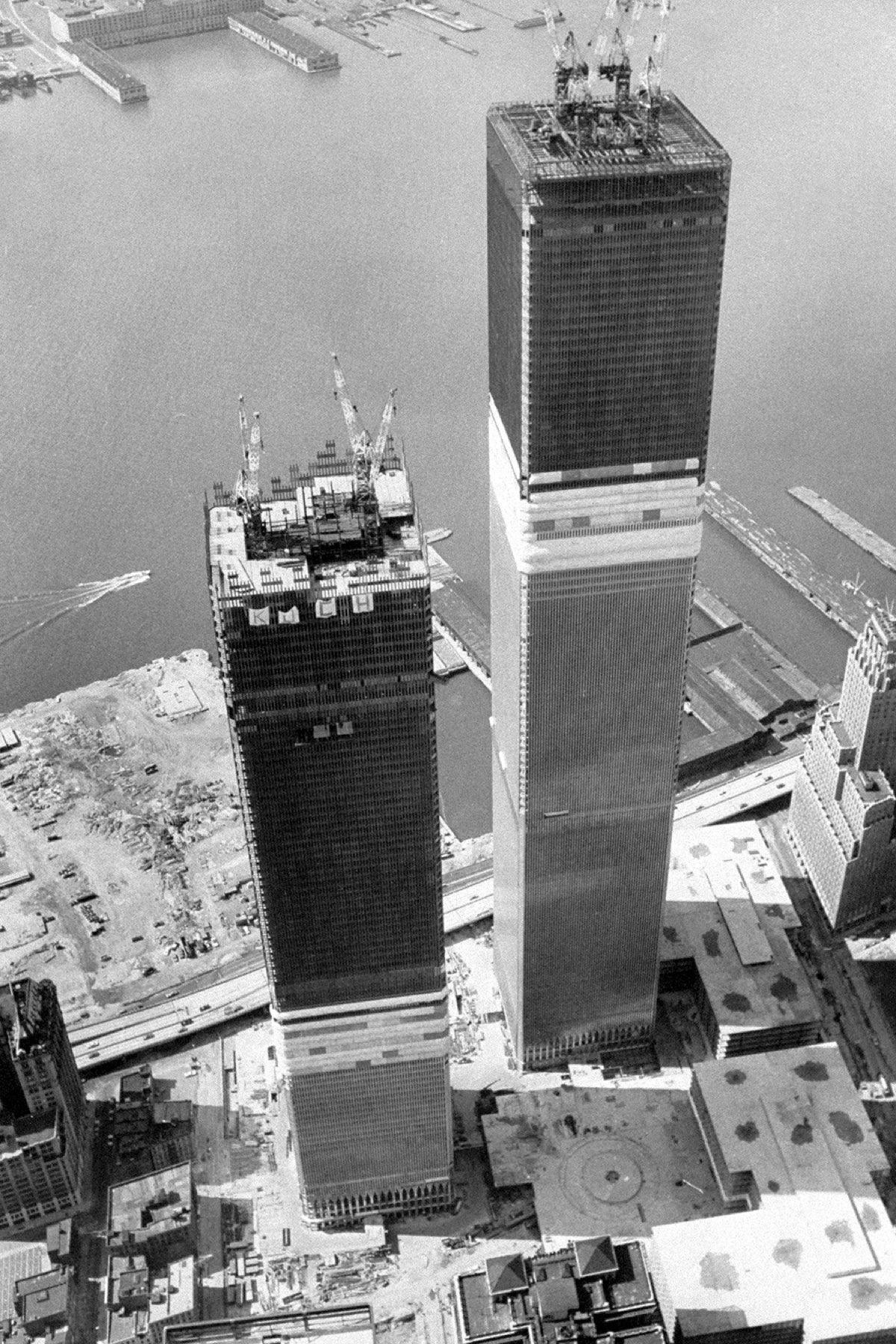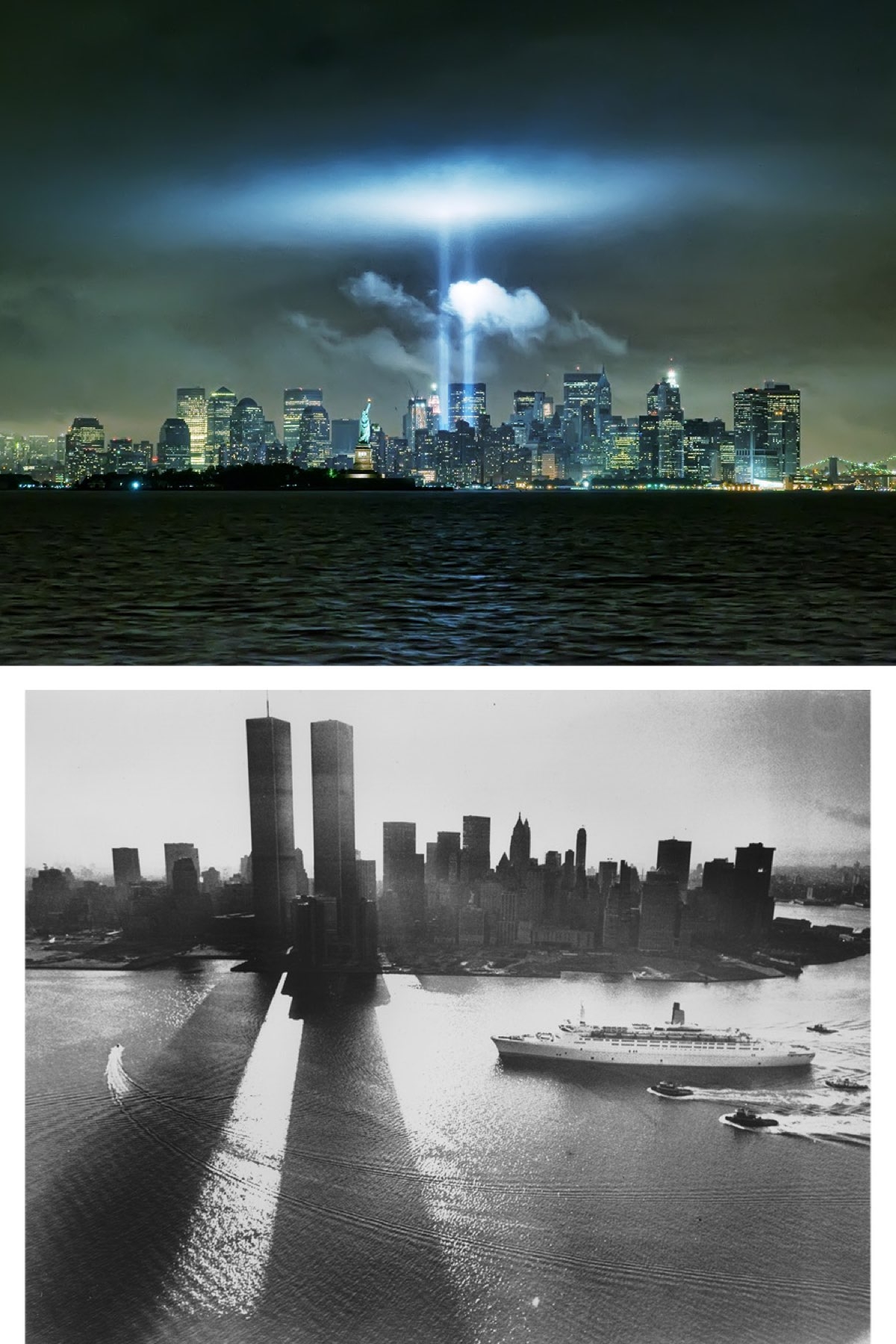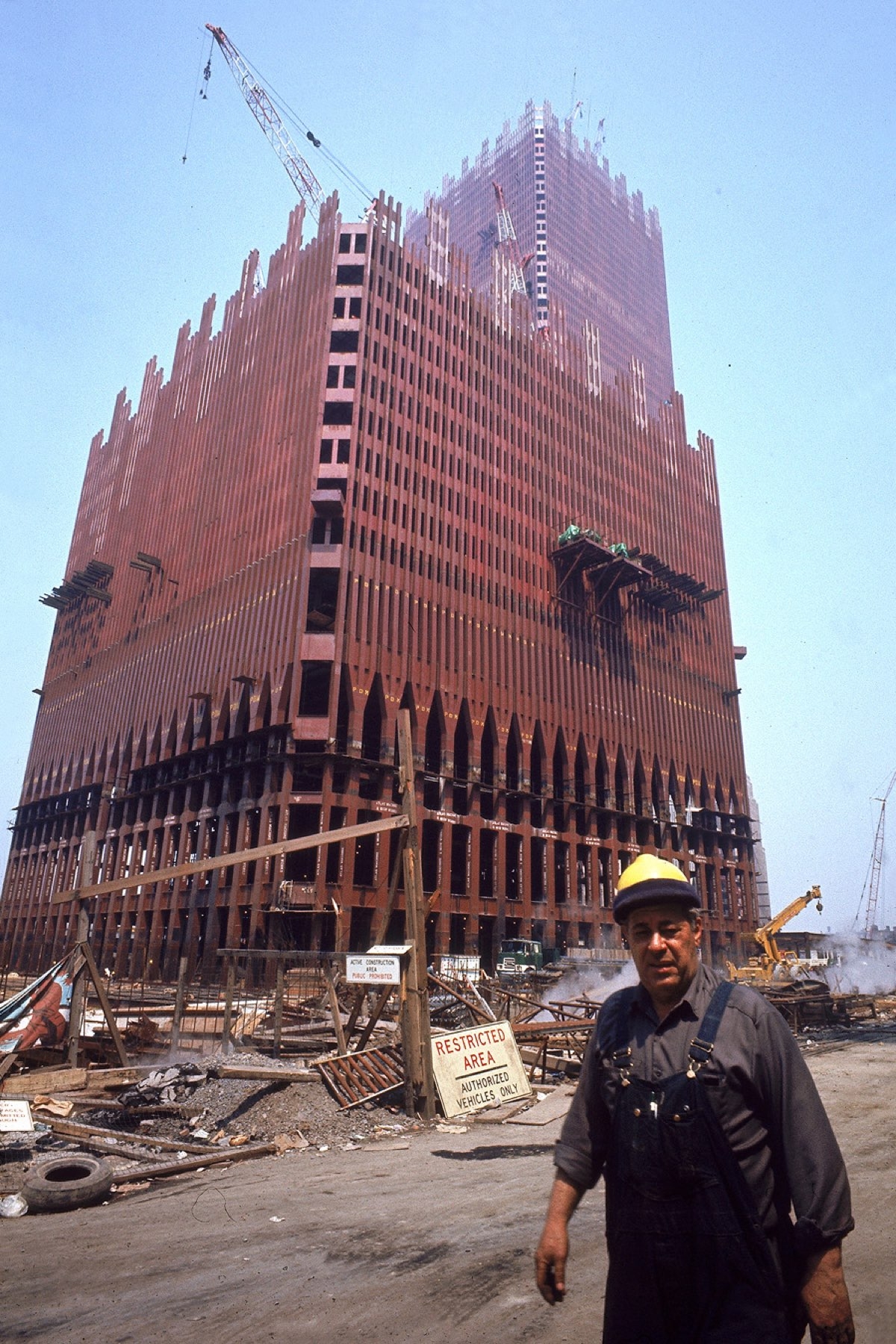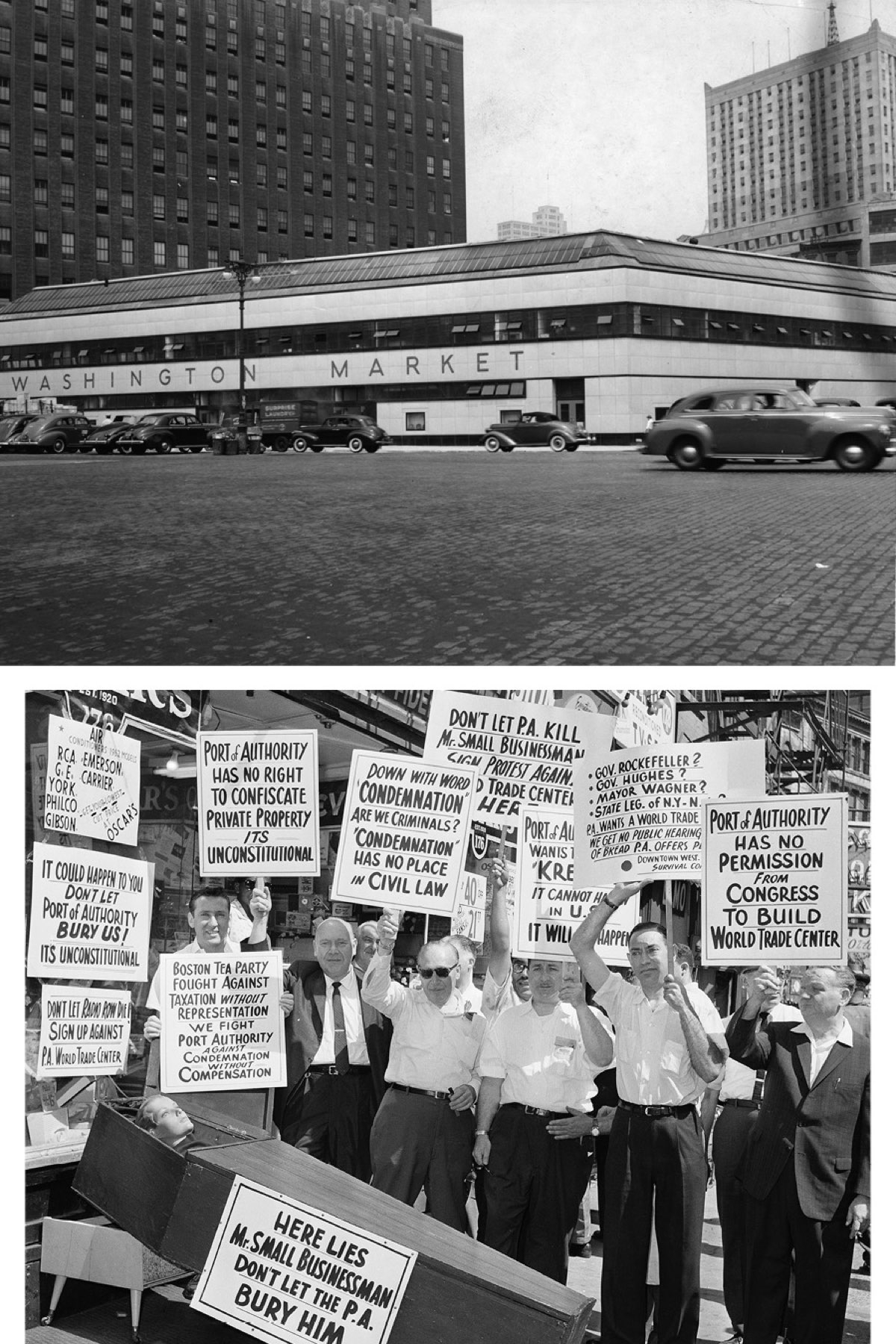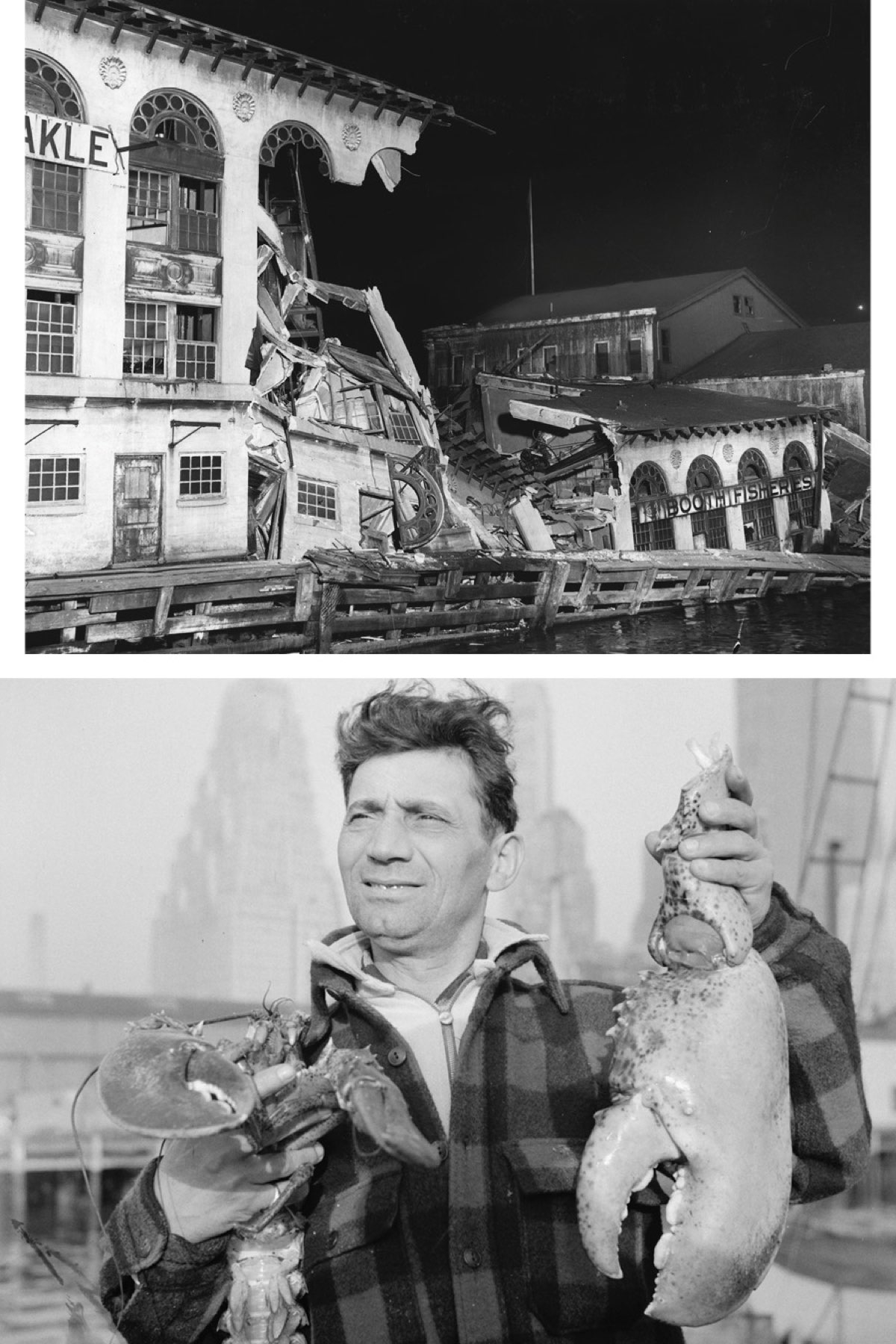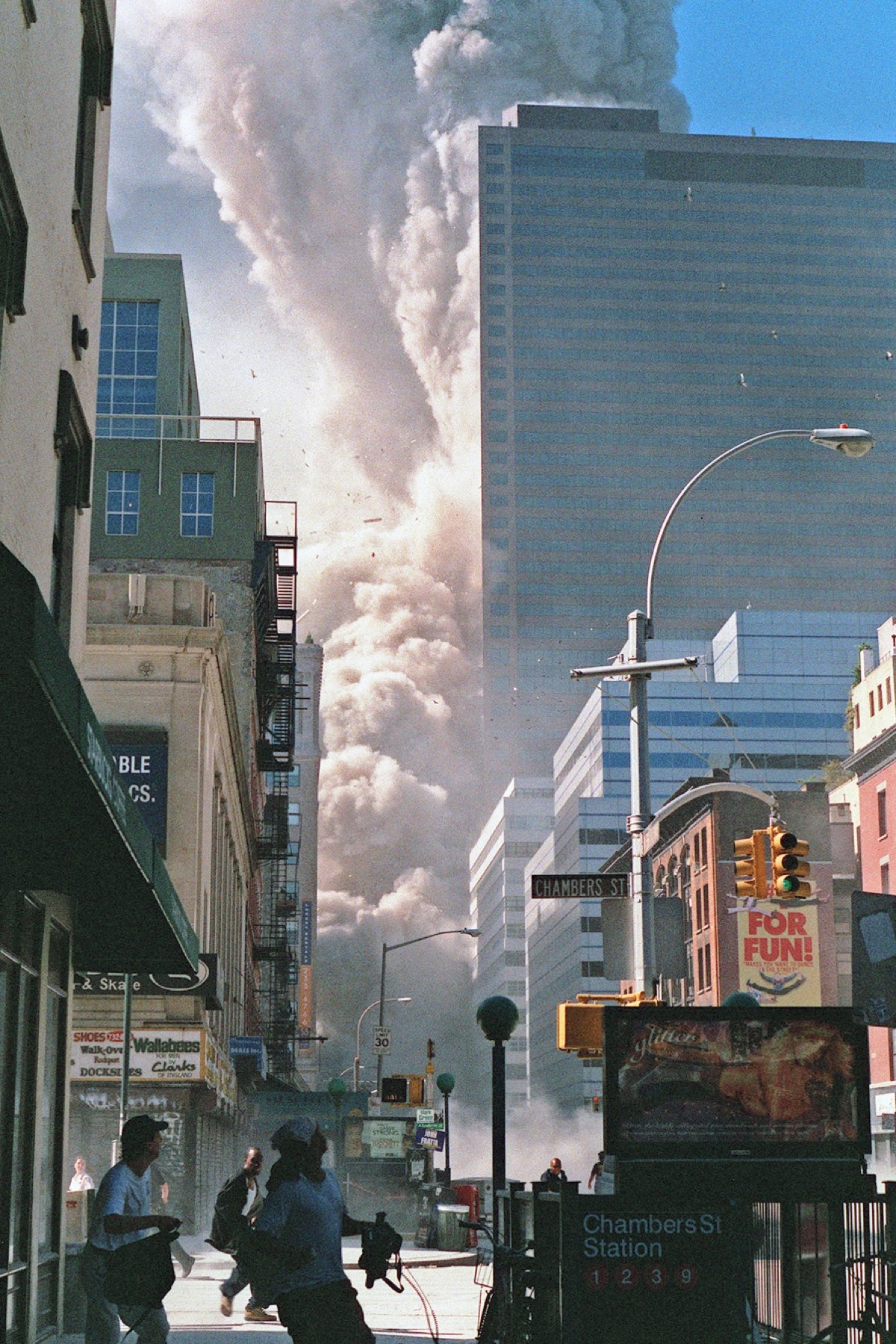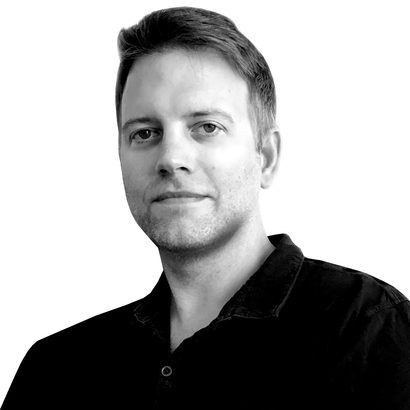From A Century Downtown: A Visual History of Lower Manhattan, by Matt Kapp, to be published next month by powerHouse.
Photos: Frank Hurley/New York Daily News Archive/Getty Images (1970 W.T.C.); Getty Images (Tribute in Light); Neal Boenzi/The New York Times/Redux (shadow of towers); Jean-Louis Blondeau/Polaris (Petit); Archive Photos/Getty Images (construction worker); Library of Congress (Washington Market, Fulton Fish Market destruction, stevedore); Bettmann/Getty Images (protest); Joe Woolhead (9/11, crane, Oculus)

